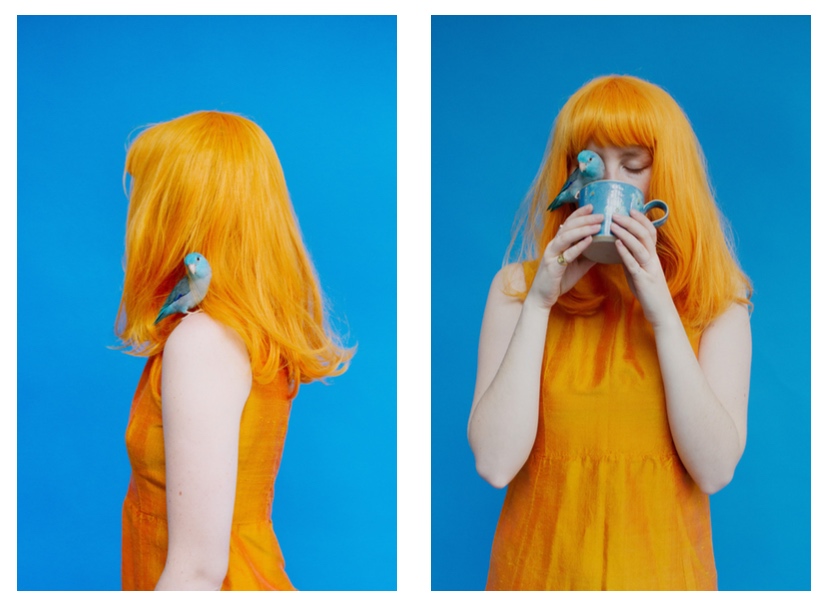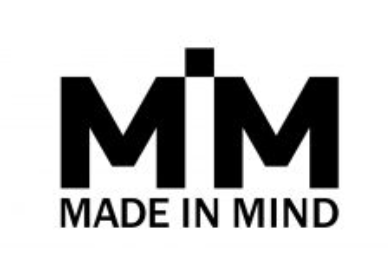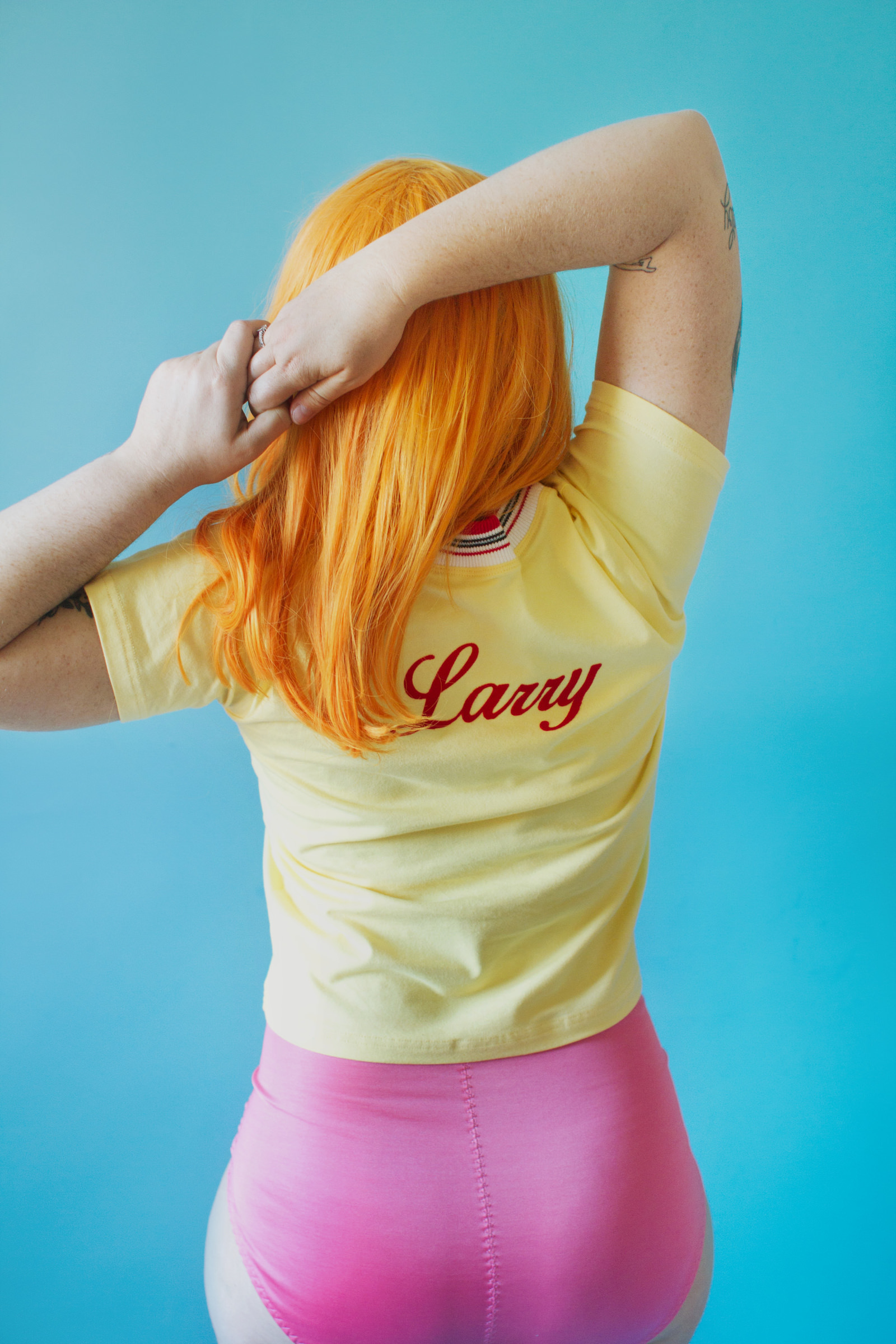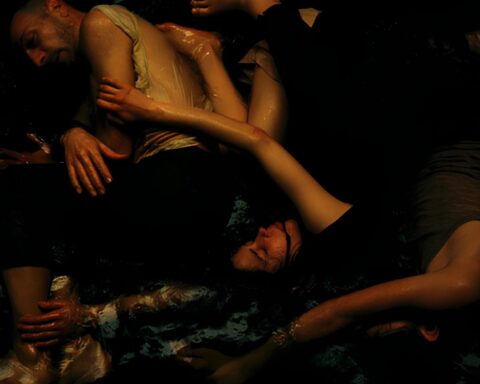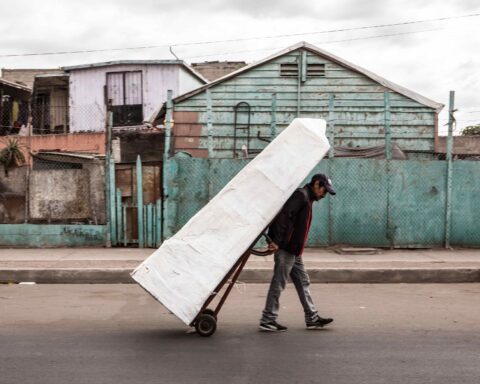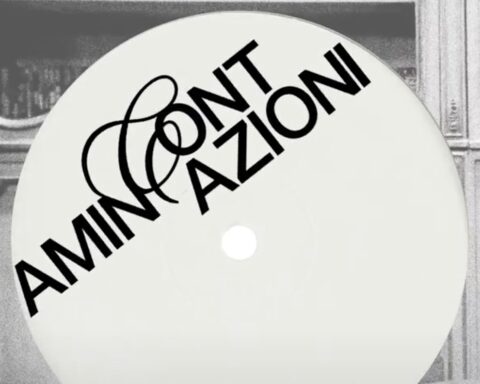In Montreal, Canada, lives Laurence Philomene (1993), a non-binary photographer, director and curator. Laurence’s work deals with gender and identity issues as seen through a queer/trans lens. The artist studied Commercial Photography at Dawson College in Montreal and then worked for international clients including: Vice, Broadly, Refinery29, VSCO, Converse, Netflix and Teen Vogue. Candids and pastel colors fill the images disclosing a strong attention to otherness: the pictures are made by a close conversation with the models. In doing so the purpose of the artist is to create awareness in public and to discover a rising community of non-binary people, who try to make you think about stereotypes and categorizing the way of thinking. Laurence showed work in the solo show Laurence Philomene at La maison du Québec à St-Malo, St-Malo, France in 2019; Me vs Others at The Letter Bet, Montreal, Canada in 2018; and no girls / no boys / no nothin’ at Nosna Gallery, Cracow, Poland in 2018. The artist also participated at different festivals and group exhibitions including the Queeruption Festival, Budapest, in 2019; Currents curated by Forge Art Mag at Mount Analogue, Seattle, USA in 2019; Chromatic Festival at Usine C, Montreal, Canada, in 2019.
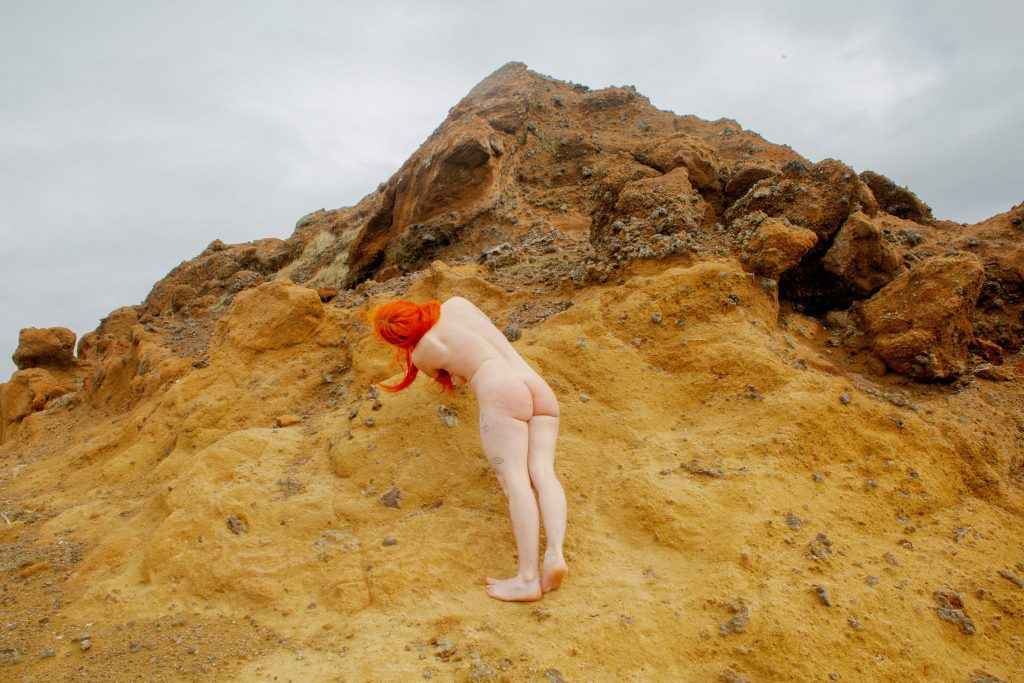
Gianluca Gramolazzi: What was your first shot? What is the main difference between that and your last picture?
Laurence Philomene: I got my first camera when I was five years old – it was a plastic Rugrats 35mm point and shoot. The first pictures I took with it were documenting my family, and the environment around me. I think in a way, that is still exactly what I am doing today: purposely documenting my life and the people I love. The main difference is that as a child, I didn’t understand photography as art, I just saw it as a means to document and to save memories. Right now I’m really focusing on the historical + artistic importance of documenting my life as a queer and trans working class artist in the 21st Century.
G.G. Looking at your works, I found a large connection with fashion and pop culture, but also music and visual art. What are your cultural references?
L.P. My biggest influence has been the internet – starting with Flickr when I was first posting my work online in 2007-2009, then Tumblr from 2010 to 2014, and now Instagram. The constant flow of images on our screens. I like to look at how social media is shaping our lives. I get a lot of inspiration from my contemporaries, young photographers who found their start on the internet.
Some of my favourites are Hobbes Ginsberg, Maisie Cousins, Erica Segovia, Olivia Bee, Vivian Fu. I also like to look at queer photography in history; Mapplethorpe, Bettina Rheim’s book Modern Lovers which inspired me greatly in college, Wolfgang Tillmans, to name a few. My favorite body of work as of recently is Lauren Greenfield’s massive book Generation Wealth – I hope to do what she’s done looking at consumerism culture one day with gender in its various forms.
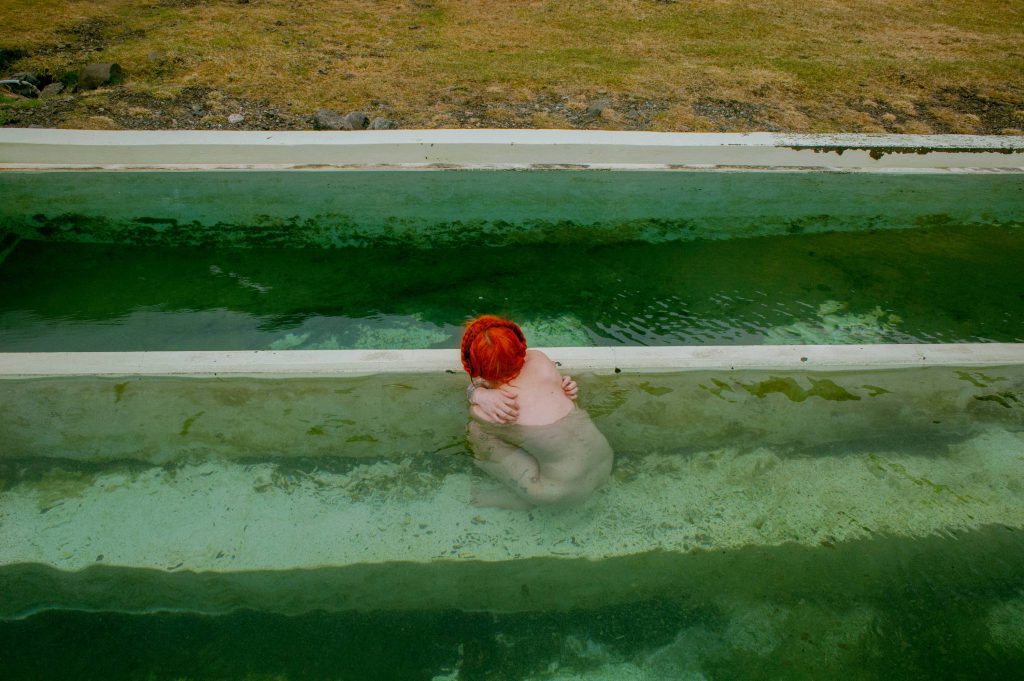
G.G. In your pictures, there are often natural elements combined with curated settings. Is this relationship utilized in a conceptual way? How do you conceive images?
L.P. I like to curate the setting in which my images happen but the final photograph itself is usually a candid moment. The way I conceive images is by curating these moments in my life which I then photograph – for example I’ll bring someone to a specific location and decide on an outfit and accessories for them to wear etc., but from there, I just kind of let the moment inspire me. I’ll have conversations with my models and it’s like we’re just hanging out and I’m photographing what happens. Because I shoot with a digital camera, I can take hundreds of images in one setting, and then sit with them at my computer and select just the right moment after the fact.
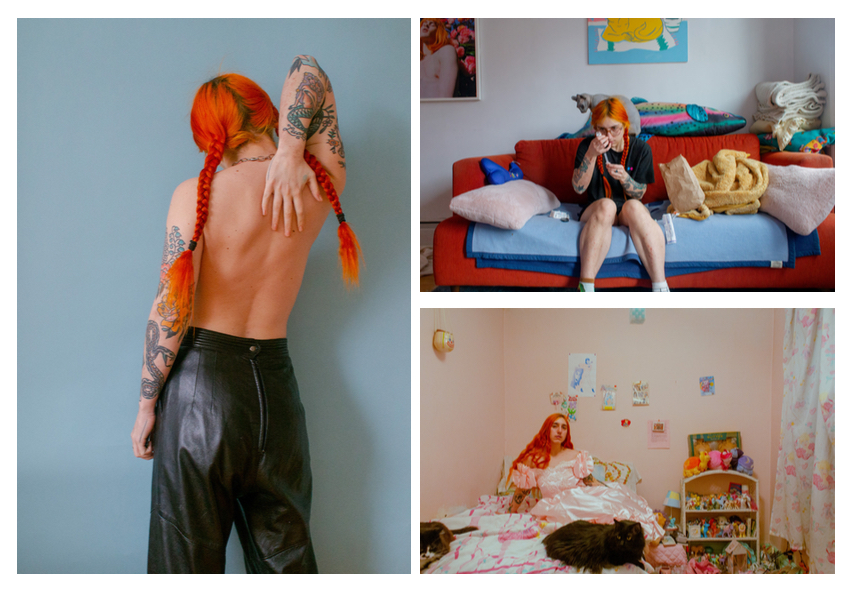
G.G. The body is still the main political tool and, in this context, it becomes a battlefield too. Is your political aim to show yourself in the work? How do you select the subject of your pictures?
L.P. I felt too scared to show myself in my work for a long time, which was how my project Me vs Others where I take pictures of other people dressed as me came about. These days though, I am heavily focused on self-portraiture, documenting my own transition with testosterone through daily self portraits in a project titled puberty. There is something really vulnerable about the act of letting yourself be photographed, it’s been an interesting exercise to do that to myself on a daily basis and be honest with it. Regardless of if I’m directly in the images or not though, my work is always autobiographical. I photograph people in my community, my close friends, people I love. My aim as a transgender photographer is to document my own community, and to show the beauty that I see in them. I think in this day and age just the act of existing and sharing our stories as transgender people is a political act in itself.
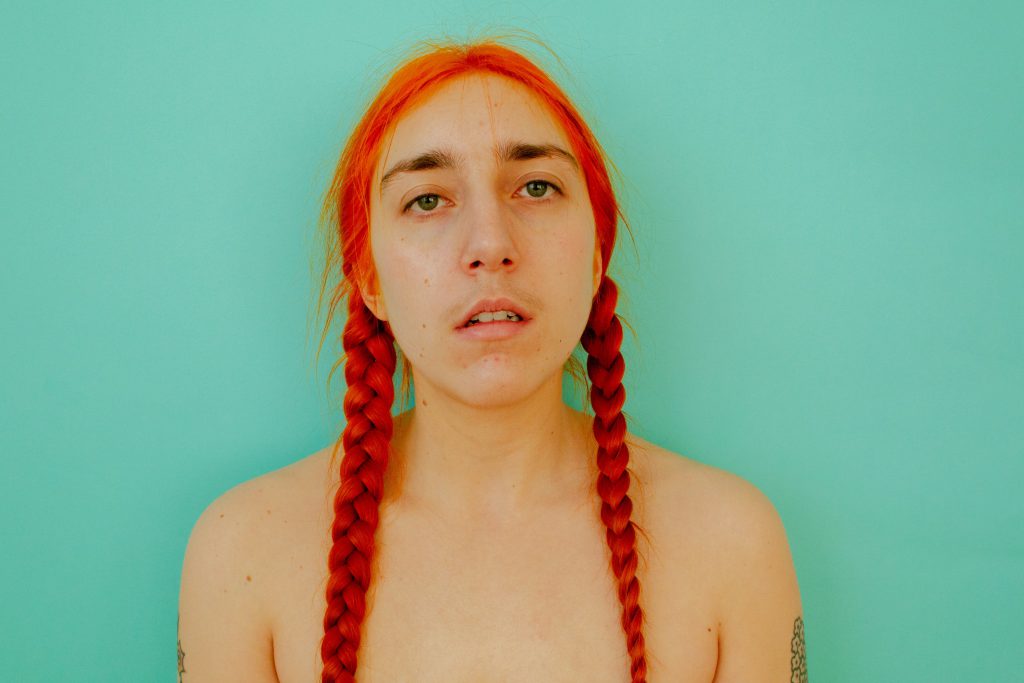
G.G. Slowly, medical science came into our lives and tried to submit the body to control. How do you relate to medication? Do you think it is a sort of normalization and standardization of us?
L.P. I think this is a really interesting question, especially in the context of trans bodies. Trans lives are often dictated and constructed by medical professionals, yet at the same time we have a really hard time accessing healthcare. Doctors get to decide if we are “trans enough” or worthy of receiving healthcare. I want to shift that paradigm and showcase trans individuals in control of their own lives. I also have suffered from a chronic autoimmune illness since I was four years old, so in a lot of ways my life has depended on medication and medical professionals for a long time. There were periods of my life where the hospital was my second home. In that sense I’m very grateful to medication, and I feel very comfortable around it. We have to be careful about how we think of “health” and relate it to “normal” though – and accept the different ways that humans exist and survive without trying to control or regulate it. The transgender community lived on the edge: straight society tried to remove what’s different. Thanks to the fight of thousands of activists against heteronormativity, from the edge trans non-binary subjectivity came to light. Do you think your work could destroy stereotypes and be helpful to who is still in the darkness? Yes, absolutely. Every day I get messages from people telling me that my work has helped them understand/accept their own gender identity, feel closer to a loved one who is transgender/ non-binary, or just made them think about gender as something that’s fluid. At the end of the day, this is really why I do the work I do – it’s education through art. I will keep doing this work as long as it’s helpful to others. I really believe in art as a means of communicating new ideas like this.
